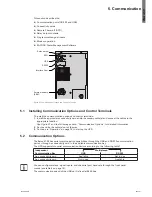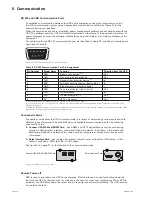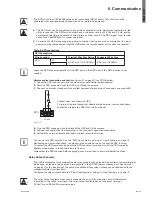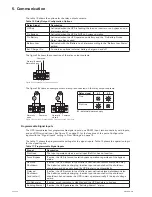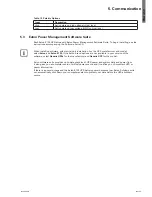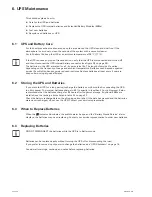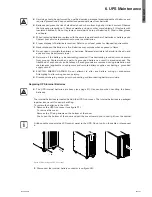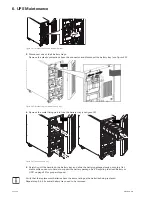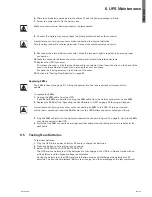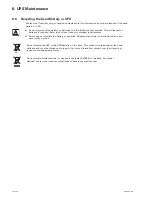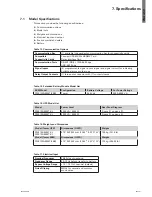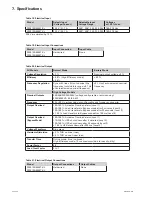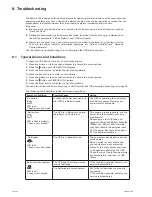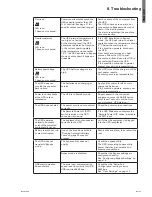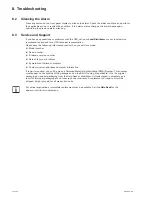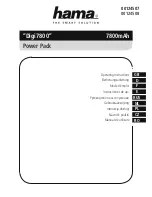
Page 35
9130 UPS-EN
ENGLISH
8. Troubleshooting
Overload
Power requirements exceed the
UPS capacity (greater than 100
% of nominal; see page 31 for
specific output overload ranges).
Remove some of the equipment from
the UPS.
The UPS continues to operate, but
may switch to Bypass mode or shut
down if the load increases.
The alarm resets when the condition
becomes inactive.
LED is on.
1 beep every second.
Overtemperature
The UPS internal temperature is
too high or a fan has failed.
At the warning level, the UPS
generates the alarm but remains
in the current operating state.
If the temperature rises another
10 °C, the UPS transfers to Bypass
mode or shuts down if bypass is
unusable.
If the UPS transferred to Bypass
mode, the UPS will return to normal
operation when the temperature drops
5 °C below the warning level.
If the condition persists, shut down
the UPS.
Clear vents and remove any heat
sources. Allow the UPS to cool.
Ensure the airflow around the UPS is
not restricted. Restart the UPS.
If the condition continues to persist,
contact your service representative.
LED is on.
1 beep every second.
Battery overvoltage
The UPS battery voltage is too
high.
The UPS turns off the charger until the
next power recycle.
Contact your service representative.
LED is on.
1 beep every second.
The UPS does not
provide the expected
backup time.
The batteries need charging or
service.
Apply utility power for 48 hours to
charge the batteries.
If the condition persists, contact your
service representative.
Power is not available
at the UPS output
receptacles.
The UPS is in Standby mode.
Supply power to the connected
equipment: press the On/Off button
for at least 1 second, until the front
panel displays "UPS starting...".
The UPS does not start.
The power cord is not connected
correctly.
Check the power cord connections.
The Remote Power-off (RPO)
switch is active or the RPO
connector is missing.
If the UPS Status menu displays the
"Remote Power Off" notice, inactivate
the RPO input.
The UPS operates
normally, but some
or all of the protected
equipment is not on.
The equipment is not connected
correctly to the UPS.
Verify that the equipment is plugged
into the UPS receptacles.
Battery test did not run
or was interrupted.
One of the conditions listed in
"Running Automatic Battery
Tests" on page 20 was not
present.
Resolve the condition, then restart the
test.
The UPS does not
transfer to Bypass
mode.
The bypass utility does not
qualify.
Check the bypass utility.
The UPS is receiving bypass utility
power that may be unstable or in
brownout conditions.
Bypass mode is disabled.
Check that the Bypass settings are
configured correctly.
See "Configuring Bypass Settings" on
page 19.
USB communication
does not work.
The serial port communication
speed is set incorrectly for USB.
USB requires 9600 bps.
Check that the "Serial Port
Configuration" setting is set to
9600 bps.
See “User Settings” on page 15.

